Tire size can be confusing. Some numbers on the sidewall are listed in millimeters while others are inches. Plus, the right size for your car, truck, or trailer can differ depending on where and how you drive.
You can see your original equipment tire size in your owner’s manual or on the placard generally located on the driver’s side door jam. This is the sizing recommended by the vehicle manufacturer.
If you’re interested in switching out your tires for a different look or performance, a good place to start is the numbers and other indicators on your existing tires’ sidewall. Next, have a tire professional help you determine a tire size range that will fit your vehicle and driving needs.
Here’s what those numbers and indicators on the sidewall indicate and how to understand them:
A: TIRE TYPE The first letter in the code tells you what class of tire it is.
P stands for passenger vehicle tire. P-class tires include cars, SUVs, crossovers, minivans and smaller pickup trucks.
LT means light truck tire, designed for vehicles that are capable of carrying heavy loads, towing trailers, or for those looking for an extra heavy duty option. These are often equipped on three-quarter or 1 ton trucks and SUVs.
ST stands for Special Trailer. These tire sizes are meant for trailers, including fifth wheels and other travel trailers, as well as boat and utility trailers.
If there’s no letter before the first number, you have a metric tire most commonly referred to as European size. It’s also measured in millimeters but may have a different load capacity than a P or LT tire.
B: TIRE WIDTH The three-digit number following the letter is the tire’s width (from side to side, looking at the tire head on) in millimeters. This may also be referred to as the section width.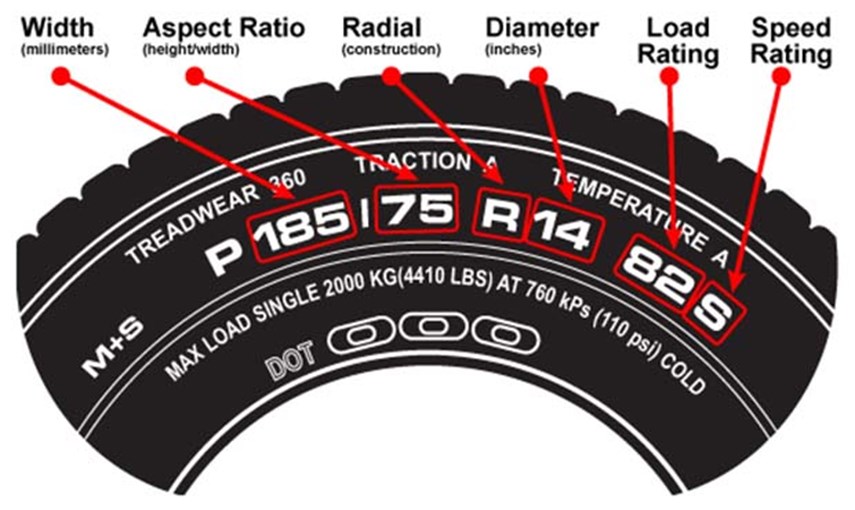
C: ASPECT RATIO The forward slash separates the tire width number from the two-digit aspect ratio. The bigger the aspect ratio, the higher/taller the tire’s sidewall, or “profile” as it’s sometimes called.
The aspect ratio is indicated on the tire sidewall as a percentage. It’s the height of the sidewall measured from wheel rim to top of the tread, expressed as a percentage of tire width.
In this example, the aspect ratio is 65, meaning the sidewall is 65 percent as high as the tire is wide. To get the sidewall height, take the tire width of 215 mm and convert it to inches (8.46). Then multiply this by 65% (.65). This gives you an answer of 5.5, the sidewall height in inches.
D: CONSTRUCTION TYPE This single letter tells you about the internal construction of the tire.
R is for radial tires, the industry standard for most tires today. They have better road grip, lower rolling resistance for better gas mileage, ride comfort and durability than previous generations of tires.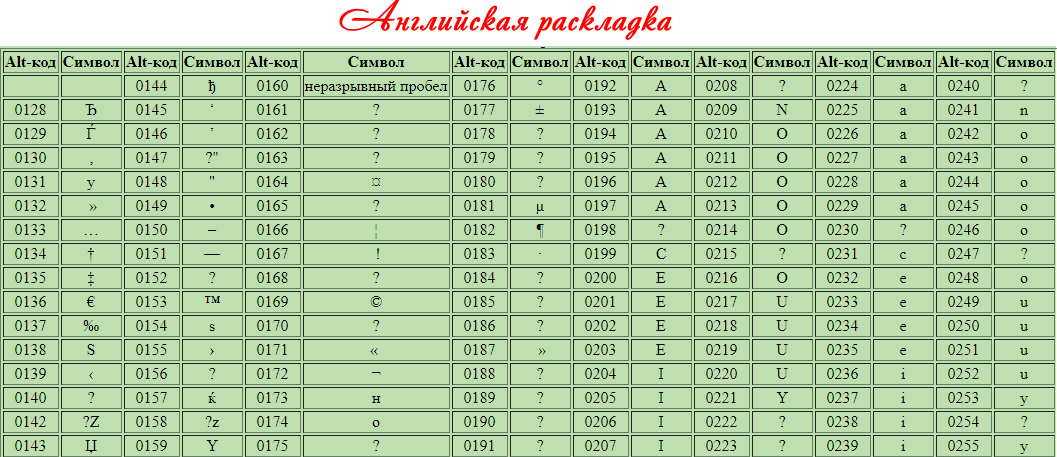 In a radial tire, the plies — layers of strong cords made of a blend of polyester, steel and fabric and coated with rubber — are laid perpendicular to the direction of travel.
In a radial tire, the plies — layers of strong cords made of a blend of polyester, steel and fabric and coated with rubber — are laid perpendicular to the direction of travel.
D is for tires built with diagonal (crisscrossed) plies, called bias-constructed tires. They are also called conventional, x-ply, or cross-ply tires. Some motorcycle and trailer tires still use this internal construction.
Some run-flat tires are identified with an F followed by the type of internal construction.
E: WHEEL DIAMETER This two-digit number specifies wheel diameter in inches. It’s the distance between the two bead seat areas (where a tire gets tightly sealed onto the wheel).
F: LOAD INDEX The two-digit or three-digit number that follows the gap specifies tire load index. The load index symbol indicates how much weight a tire can support, based on the following standard chart. In our example, the load index is 89, which indicates the tire has a load capacity of 1,279 pounds, when inflated to the tire’s maximum air pressure rating.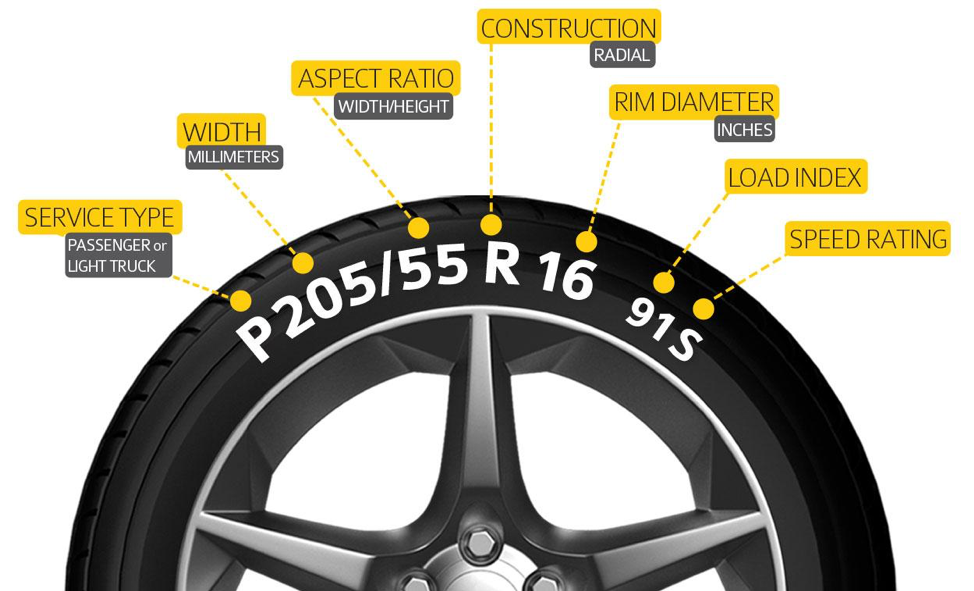
G: SPEED RATING The last letter is the tire speed rating. This indicates the top speed it’s safe to travel at for a sustained amount of time. A tire with a higher speed rating can handle heat better and provide more control at faster speeds. The maximum operating speed of a vehicle is no more than the lowest speed rating of all tires mounted on the vehicle. (Of course, you should always abide by speed limits for safer driving.) Speed rating is usually, but not always, a single letter (see the chart).
Below you will find several charts that will help you understand tire sizing numbers, including a load index chart and speed rating chart.
A tire size calculator is a quick way to see whether the tire size you’re considering will likely fit your car, SUV, sports car, light truck or crossover.
But remember that is only an estimate. It’s important to stay within the sizing tolerances of your vehicle.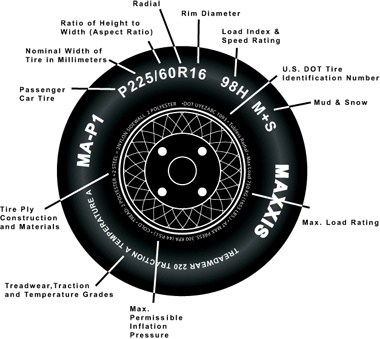 Tires that are the wrong size could cause some pull in the steering wheel, rub against the suspension or body of your vehicle, reduce clearance on hills, or result in a stiffer or noisier ride.
Tires that are the wrong size could cause some pull in the steering wheel, rub against the suspension or body of your vehicle, reduce clearance on hills, or result in a stiffer or noisier ride.
If you’re considering mounting a different tire size on your vehicle, check with a tire expert. Find out whether the tires and wheels you have your eye on are the right fit for your vehicle’s suspension, gearing, and bodywork. And ask how any differences in revolutions per mile, tire speed, load index, and speed rating will affect your ride quality and vehicle performance.
See how new tires and rims will look on your car or truck using our Virtual Wheels simulator, available at any Les Schwab.
Find Your Store
Want to know how old your tires are or what size your tires are? You need to know how to read tire sidewall information, the alphanumeric code stamped on to the side of your tires. But if you've ever looked at the sidewall of a tire and thought that the blizzard of numbers, letters, and words was as confusing as hieroglyphics, we understand.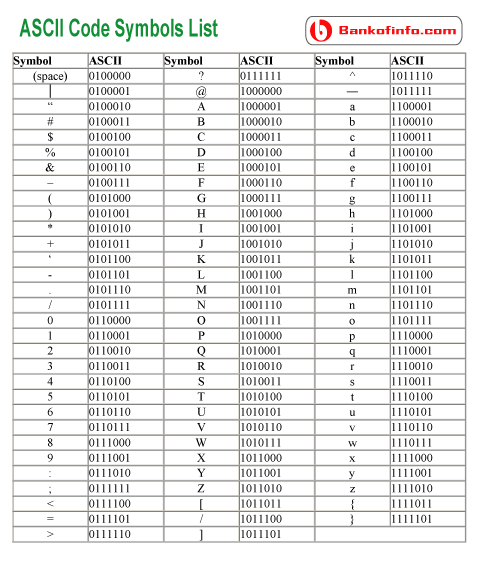 The alphabet soup on tires' sidewalls can be off-putting, but it's pretty easy once you know what you're looking at.
The alphabet soup on tires' sidewalls can be off-putting, but it's pretty easy once you know what you're looking at.
Beyond the brand (Michelin, Continental, Hankook, etc.) and model names of the tire, the plethora of data stamped on the sidewall is there largely to satisfy government regulations, which require all manner of information—from when and where the tire was built to how durable it is. Not to worry. Let us be your Rosetta stone to deciphering the language of the tire sidewall. The numbers highlighted in pink on the sample tire below correspond to the explanations that follow.
1) These are some of the most important numbers on any tire, as they tell you how big your tires are. In this case, the tire is 245 millimeters at its widest point (when it's mounted on a wheel of a specified width).
2) The number after the slash indicates its aspect ratio, or profile. This tire's sidewall height is 40 percent of its width.
3) The "R" stands for radial construction (rarer bias-ply and belted tires are denoted by a D and B, respectively).
4) The number 18 indicates that this tire fits an 18-inch wheel. Sometimes, letters precede the first number. A "P" stands for p-metric, which is a tire used primarily on passenger cars. An "LT" indicates a light-truck tire. A "T" means it's a temporary spare. Some tires get a "Z" or an "F" attached to the radial indicator, denoting a Z-rated tire (see service description below) or a run-flat tire.
5) This alphanumeric code is the service description, which provides two key insights into the tire's performance: how much weight it can carry and how fast it can run safely—the latter another good indication of whether it's intended for a family sedan or a hot sporty machine. In our example, the "93" stands for the maximum-load rating of 1433 pounds. The letter W denotes the maximum speed rating, which translates 168 mph—not something intended for mom's minivan.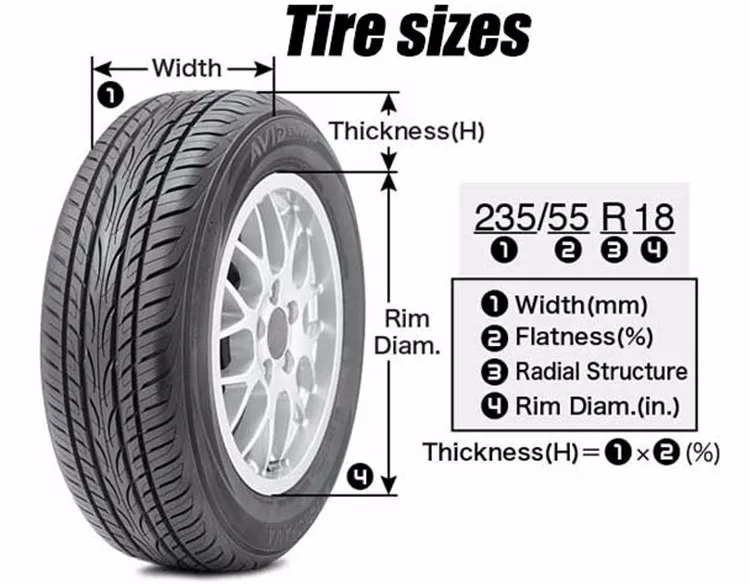 See our list of speed ratings below, which range from a low of "L" (just 75 mph for some off-road tires) to a high of Y (186 mph). There is also one special ultrahigh speed rating: If a Y-rated tire has parentheses around its service description, say, "(93Y)," that means the tire is rated for speed "in excess of 186 mph." There are also Z-rated tires, but when that designation came out, no one thought a speed rating in excess of 149 mph would ever be needed. By definition, all W- and Y- rated tires are also Z-rated, though not all get a "Z" embossed on the sidewall.
See our list of speed ratings below, which range from a low of "L" (just 75 mph for some off-road tires) to a high of Y (186 mph). There is also one special ultrahigh speed rating: If a Y-rated tire has parentheses around its service description, say, "(93Y)," that means the tire is rated for speed "in excess of 186 mph." There are also Z-rated tires, but when that designation came out, no one thought a speed rating in excess of 149 mph would ever be needed. By definition, all W- and Y- rated tires are also Z-rated, though not all get a "Z" embossed on the sidewall.
6) Many but not all tiremakers note the heaviest spot of the tire with a red dot. It ultimately has no bearing on tire-and-wheel balance, so it's of little importance.
It ultimately has no bearing on tire-and-wheel balance, so it's of little importance.
A tire's alphanumeric codes reveal everything from how fast it can run to where it was built.
7) The numbers after the word "treadwear" indicate (surprise!) the treadwear of the tire, or how long it's likely to last. The higher the number, the more likely it is that you'll get more miles out of it. But the tests that determine tread life are not exact. The experts at tire-seller Tire Rack report that treadwear ratings can vary. They cite the example of two different tires they sell—one from Goodyear and the other from Continental—both of which offer an 80,000-mile tread-life warranty. You'd expect them to have similar, if not identical, treadwear ratings, but the Goodyear's is 740, while the Continental's is 600. So take this number as an indicator, but not an exact predictor, of how long a tire will last.
8‑9) The letter after the word "traction" is a rating that results from a test of how much grip a tire generates when dragged across wet pavement without the tire rotating.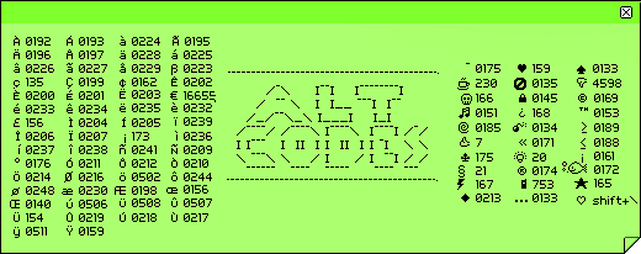 It's not of great relevance to today's cars, which have anti-lock brakes that keep the tires rolling even during emergency braking. The letter following the word "temperature" is an indicator of how well a tire dissipates heat, which increases severely at high speed. Again, it is of less importance than the tire's speed rating, which takes this into account.
It's not of great relevance to today's cars, which have anti-lock brakes that keep the tires rolling even during emergency braking. The letter following the word "temperature" is an indicator of how well a tire dissipates heat, which increases severely at high speed. Again, it is of less importance than the tire's speed rating, which takes this into account.
10‑11) Some tires carry an "M+S" marking, which stands for "mud and snow." It means that the tire has some added capability in those circumstances because it has a little extra space between its tread blocks. But such tires are absolutely not winter (snow) tires and might not even be conventional all-season tires. That's where the three-peak mountain snowflake icon next to the M+S mark comes in. If a tire has that molded into its sidewall, it has significant snow capability and should be considered a viable winter tire.
12) This area of the tire may display what's called the original-equipment (OE) marking.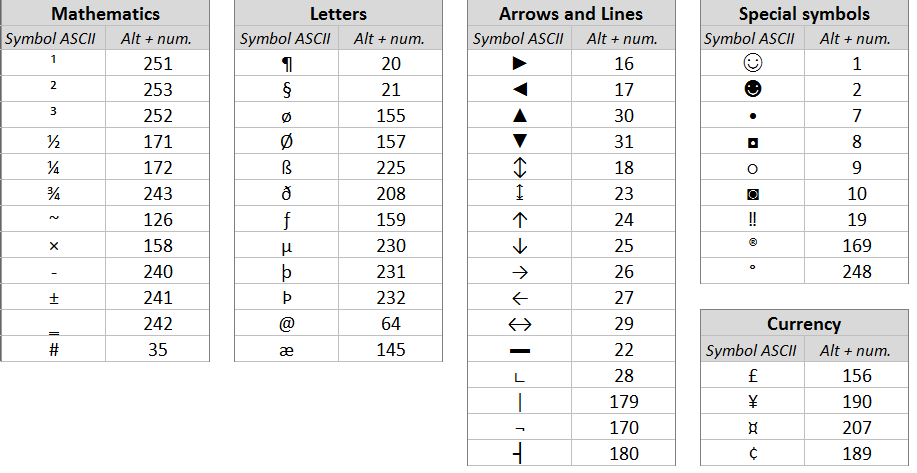 Automakers sometimes take a standard, off-the-rack commodity tire and modify its construction or rubber compound to work better on one of their models. So, a Ford Escort and a Chevy Cruze might both be equipped with Firestone Firehawk AS tires that look virtually identical, but each car's tires might differ significantly in ways that affect the ride and handling. If your vehicle's tires carry an OE code, it's best to replace them with the same brand and model of tire wearing the same code—if you can. Tire stores and online retailers can help you with finding tires with the correct OE code for your vehicle.
Automakers sometimes take a standard, off-the-rack commodity tire and modify its construction or rubber compound to work better on one of their models. So, a Ford Escort and a Chevy Cruze might both be equipped with Firestone Firehawk AS tires that look virtually identical, but each car's tires might differ significantly in ways that affect the ride and handling. If your vehicle's tires carry an OE code, it's best to replace them with the same brand and model of tire wearing the same code—if you can. Tire stores and online retailers can help you with finding tires with the correct OE code for your vehicle.
13) This is a list of the tire's construction materials, of interest primarily to tire engineers and tire geeks.
14) Every tire sold in the U.S. must have U.S. Department of Transportation (DOT) labeling. The first two characters indicate the factory of manufacture, and the next five or six are manufacturer-specific jargon (for tracking purposes, as in the case of a recall). The last four numbers give the date of production which let you know how old your tires are with the first two digits indicating the week and the latter two the year (for example, "2318" means that tire was produced in the 23rd week of 2018). The European equivalent of the DOT code may also be present (it starts with an "e"), although fewer manufacturers are printing both on a tire's sidewall. If this string of numbers ends with "-S," it means the tire complies with European noise regulations.
The last four numbers give the date of production which let you know how old your tires are with the first two digits indicating the week and the latter two the year (for example, "2318" means that tire was produced in the 23rd week of 2018). The European equivalent of the DOT code may also be present (it starts with an "e"), although fewer manufacturers are printing both on a tire's sidewall. If this string of numbers ends with "-S," it means the tire complies with European noise regulations.
Tire Rack
Buy Now
Tire Rack
Buy Now
Tire Rack
Buy Now
Tire Rack
Buy Now
There are more inscriptions and drawings on the sidewall of any tire than there is free space. Each icon has its own function, but it is not always possible to reveal its ins and outs without a hint. In addition, a completely new marking has appeared this year.
Each icon has its own function, but it is not always possible to reveal its ins and outs without a hint. In addition, a completely new marking has appeared this year.
The tire's make and model are usually printed in the largest font. It is understandable: this is what the buyer pecks at. It is interesting that the same data in encrypted form is also on the protector - in the form of thin colored stripes. They are needed in order to be able to identify the rubber lying in the warehouse, because only its working surface is in the field of view of the workers. nine0003
Tire size is a mystery for many. It seems that there are no problems in everyday life: what numbers are indicated on the sidewall of a standard tire, with such you need to buy a winter or summer one to replace a worn one. But what exactly do they mean? For example, let's take the index 225/50 R17 98 N on the Continental tire.
Continental PremiumContact 6
Continental PremiumContact 6
Additional characters may be assigned to the tire model name.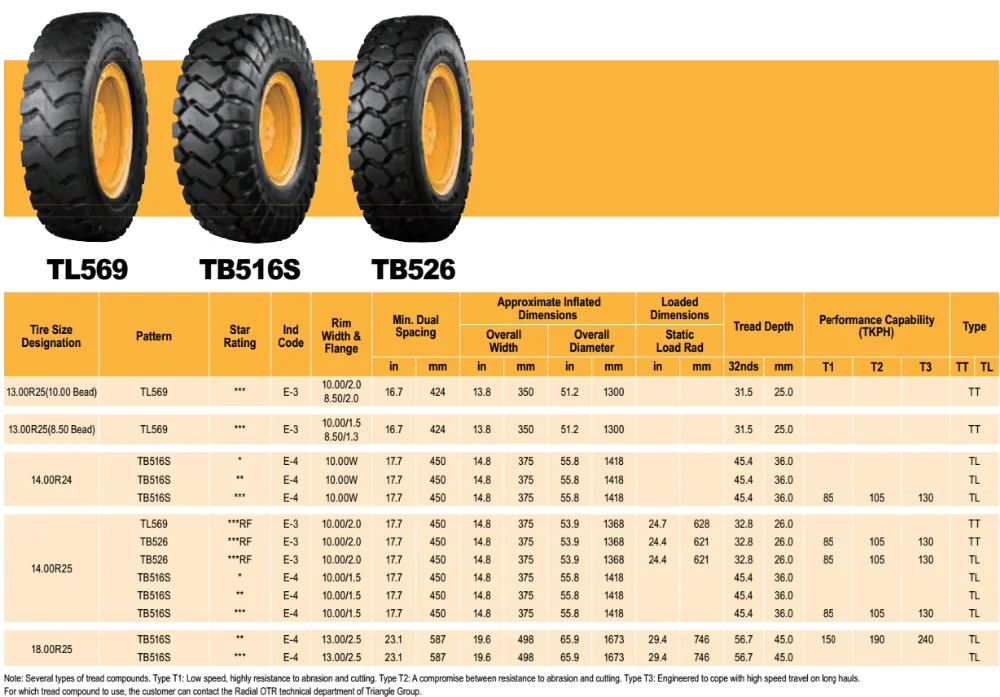 For example, SUV means focusing on crossovers and SUVs (reinforced sidewall, large load capacity), C - on commercial vehicles (from the English cargo, "cargo"). It happens that a tire is welded specifically for a particular auto concern and is intended for primary assembly on a conveyor or sale through its official dealers. So, at Continental, the indices A0 and R01 are reserved for Audi, J for Jaguar, N0, N1, N2 for Porsche, M0, M01 for Mercedes. nine0003
For example, SUV means focusing on crossovers and SUVs (reinforced sidewall, large load capacity), C - on commercial vehicles (from the English cargo, "cargo"). It happens that a tire is welded specifically for a particular auto concern and is intended for primary assembly on a conveyor or sale through its official dealers. So, at Continental, the indices A0 and R01 are reserved for Audi, J for Jaguar, N0, N1, N2 for Porsche, M0, M01 for Mercedes. nine0003
Related materials
7 main principles for choosing summer tires
Summer tires do not carry any additional markings. The letters M + S from the English Mud, “mud”, and Snow, “snow”, are on tires that are basically suitable for cold climates, but are not purely winter. The latter are indicated only by the snowflake and mountain peak icon. The inscription All season (or the abbreviation AS), we think, does not need to be translated. On top-level tires, you can find an image of an umbrella.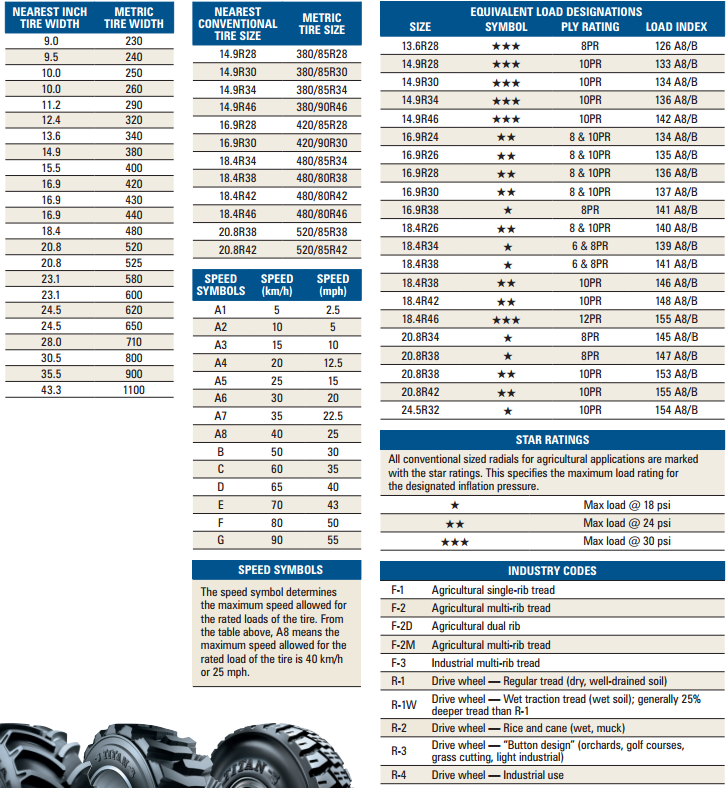 This is an indication of excellent performance on wet pavement. nine0003
This is an indication of excellent performance on wet pavement. nine0003
Often, information about the maximum load and maximum pressure is put on the tire in plain text, without allegorical codes and pictograms. Look for the phrases Max load and Max pressure respectively.
Tires with reinforced sidewalls are gaining popularity around the world, allowing you to drive several tens of kilometers after losing pressure. Usually they simply write Run Flat, although there are also original designations. So, the Continental concern puts the SSR marking on puncture-resistant models. nine0003
European tire company websites list rubber labels for noise, efficiency and environmental friendliness. The first is indicated by a number from 1 (quiet) to 3 (loud). Wet grip coefficient and fuel consumption coefficient is a letter from A (best) to G (worst). In Russia, such a classification is not yet applied.
One of the key parameters is the date of manufacture of the tire. You should also look at it when buying a new set, not to mention a used one. It is not recommended to ride on tires for more than five or six years from the date of issue, although it is not prohibited either by law or by the manufacturers themselves. The date of manufacture is indicated by four digits in an oval. The first two are a week, the second two are a year. For example, 3119stands for "boil" of the 31st week of 2019.
You should also look at it when buying a new set, not to mention a used one. It is not recommended to ride on tires for more than five or six years from the date of issue, although it is not prohibited either by law or by the manufacturers themselves. The date of manufacture is indicated by four digits in an oval. The first two are a week, the second two are a year. For example, 3119stands for "boil" of the 31st week of 2019.
Related materials
The main mistakes when installing tires: follow the masters
When mounting asymmetric rubber on wheels, the words Outside (“outer side”) and Inside (“inner side”) will tell you the correct location. On the wheels installed on the car, the owner should see only the first inscription. If there are none on the tires, there are no outer and inner sides on the tread, it is symmetrical in operation. nine0003
On both sides of the directional models, the word Rotation is mandatory. The arrow located next to it will tell you the direction of rotation of the wheel when the car moves forward.
The arrow located next to it will tell you the direction of rotation of the wheel when the car moves forward.
Continental tires are marked with TWI for critical tread wear marks. On summer models, they are supplemented by indicators with cross and drop marks. They signal that the rubber has not yet reached the minimum tread height, but it is no longer enough to feel confident in the rain. nine0003
And there are also VAI indicators on the tread. They are applied symmetrically in the left and right shoulder areas. With the correct installation of the wheel, they change as the rubber wears in exactly the same way. Discrepancies are a reason to visit the wheel alignment stand. So far, the technology is used only on truck tires.
Russia introduces mandatory tire labeling in order to combat "gray" deliveries. The unique Data Matrix code is highly secure and readable through several layers of packaging. It is declared that it cannot be faked or copied, and the information sewn into it is readable even if it is partially damaged. The code can be decrypted by each buyer. To do this, it must be scanned with a special mobile application "Honest Sign". After that, information about the manufacturer and importer, the characteristics of the product, the date of putting into circulation in Russia will be displayed on the screen of the gadget. nine0003
It is declared that it cannot be faked or copied, and the information sewn into it is readable even if it is partially damaged. The code can be decrypted by each buyer. To do this, it must be scanned with a special mobile application "Honest Sign". After that, information about the manufacturer and importer, the characteristics of the product, the date of putting into circulation in Russia will be displayed on the screen of the gadget. nine0003
Compulsory marking introduced from November 1, 2020. From this day on, production, import to Russia and purchase from manufacturers and importers of rubber without marks of the established sample are prohibited. Since December 15, the entire circulation of non-marking tires has been banned. Warehouse balances were allowed to be tagged until March 1, 2021.
Mandatory marking introduced from November 1, 2020. From this day on, production, import to Russia and purchase from manufacturers and importers of rubber without marks of the established sample are prohibited.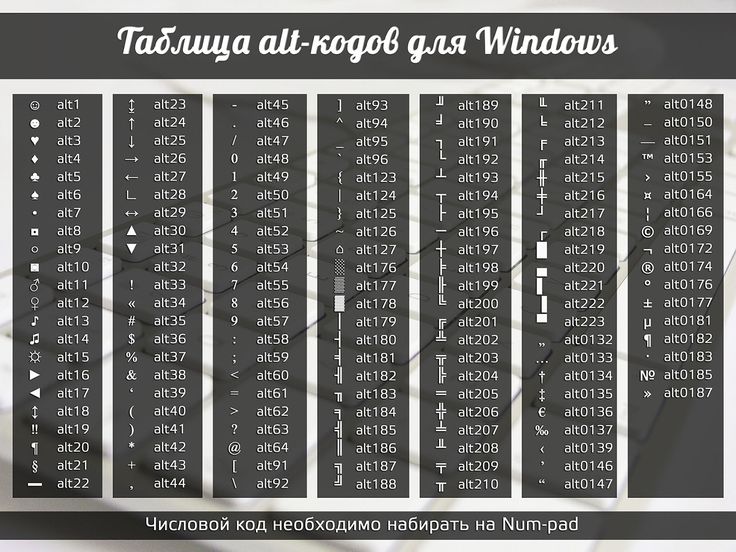 Since December 15, the entire circulation of non-marking tires has been banned. Warehouse balances were allowed to be tagged until March 1, 2021. nine0003
Since December 15, the entire circulation of non-marking tires has been banned. Warehouse balances were allowed to be tagged until March 1, 2021. nine0003
Continental has been at the forefront of technology testing in Russia and is fully prepared for its implementation. During 2019, together with hundreds of other companies from different industries in our country, he generated thousands of codes, working out the system. Moreover, on a global scale, the company has already prepared solutions for integrating electronic chips into tires, which allow monitoring their condition, including the degree of wear.
| 86 | 530 | 96 | 710 | ||||||
| 77 | 412 | 87 | 545 | 97 | 730 | ||||
78 | 560 | 98 | 750 | ||||||
| 79 | 437 | 89 | 580 | 99 | 775 | ||||
| 80 | 9009 500076 90 | 600 | 100 | 800 | |||||
| 81 | 462 | 91 | 615 | 101 | 825 | ||||
| 820003 | 92 | 630 | 102 | 850 | |||||
| 83 | 487 | 93 | 650 | 103 | 8750002 500 | 94 | 670 | 104 | 900 |
| 85 | 515 | 95 | 690 |
| Speed index | Q | R | S | T | H | V | W | Y | VR | ZR | ZR (Y) ZR (Y)0561 Photo: Continental Badges and letters on tires: deciphering all the symbols! There are more writing and graphics on the sidewall of any tire than there is free space. Each icon has its own function, but it is not always possible to reveal its ins and outs without a hint. In addition, a completely new marking has appeared this year.Badges and letters on tires: deciphering all the designations! nine0003 Badges and letters on tires: deciphering all the designations! There are more writing and graphics on the sidewall of any tire than there is free space. Each icon has its own function, but it is not always possible to reveal its ins and outs without a hint. In addition, a completely new marking has appeared this year.Badges and letters on tires: deciphering all the designations! Our new video Moskvich 3: all the details and the first test! 2 Russian novelties that will replace the Ford What is better off-road: Lada Vesta Cross or UAZ Patriot? Did you like the note? Subscribe and you will always be in the know! Driving in Zen News smi2. Tire marking. How to correctly determine tire parametersDo you want to choose a tire for your car, but do not understand tire markings well? It's not a problem! In this section, we will help you figure out what tire parameters are, what they mean, and which tire is right for your car. nine0003 Find tires / tire catalog Explanation of tire markings.
195/65 R15 91 TXL 195 is the tire width in mm. 65 - Proportionality, i.e. profile height to width ratio. In our case, it is equal to 65%. Simply put, with the same width, the larger this indicator, the higher the tire will be and vice versa. Usually this value is simply called “profile”. nine0003 Since the tire profile is a relative value, it is important to take into account when choosing rubber that if you want to put tires with a size of 205/65 R15 instead of the size 195/65 R15, then not only the width of the tire will increase, but also the height! Which in most cases is unacceptable! (except when both of these sizes are indicated in the car's operating book). R - means a tire with a radial cord (in fact, almost all tires are made this way now). Many mistakenly believe that R- means the radius of the tire, but this is precisely the radial design of the tire. There is also a diagonal design (indicated by the letter D), but recently it has practically not been produced, since its performance is noticeably worse. nine0003 15 - wheel (rim) diameter in inches. (It is the diameter, not the radius! This is also a common mistake). This is the “landing” diameter of the tire on the disk, i.e. is the inside size of the tire or the outside of the rim. 91 - load index. This is the level of maximum permissible load on one wheel. For passenger cars, it is usually done with a margin and is not a decisive factor when choosing tires (in our case, IN - 91 - 670 kg.). For minibuses and small trucks, this parameter is very important and must be observed. nine0003 Tire load index table:
T - tire speed index. The larger it is, the faster you can ride on this tire (in our case, IS - H - up to 210 km / h). Speaking about the tire speed index, I would like to note that with this parameter, the tire manufacturer guarantees the normal operation of the rubber when the car is constantly moving at the specified speed for several hours. Speed index table:
American Tire Marking: There are two different markings for American tires. The first one is very similar to the European one, only the letters “P” (Passanger - for a passenger car) or “LT” (Light Truck - light truck) are placed before the size. Example: 31x10.5 R15 (corresponding to European size 265/75 R15) 31 is the outside diameter of the tire in inches. Generally speaking, except for inches that are unusual for us, the American tire marking is logical and more understandable, unlike the European one, where the height of the tire profile is not constant and depends on the width of the tire. And here everything is simple with decoding: the first digit of the standard size is the outer diameter, the second is the width, the third is the inner diameter. nine0003 Additional information indicated in the marking on the sidewall of the tire: XL or Extra Load is a reinforced tire, the load index of which is 3 units higher than that of conventional tires of the same size. All Season or AS all season tires. Aw (Any Weather) - Any weather. nine0003 Pictogram * (snowflake) — rubber is designed for use in harsh winter conditions. If this marking is not on the sidewall of the tire, then this tire is intended for use only in summer conditions. Aquatred, Aquacontact, Rain, Water, Aqua or pictogram (umbrella) - special rain tires. Outside and Inside ; asymmetric tires, i.e. It is important not to confuse which side is the outside and which is the inside. When installing, the Outside inscription must be on the outside of the car, and Inside on the inside. nine0003 RSC (RunFlat System Component) - RunFlat tires are tires that allow you to continue driving your vehicle at a maximum speed of 80 km/h with a FULL tire pressure loss (puncture or cut). On these tires, depending on the manufacturer's recommendations, you can drive from 50 to 150 km. Different tire manufacturers use different designations for RSC technology. For example: Bridgestone RFT, Continental SSR, Goodyear RunOnFlat, Nokian Run Flat, Michelin ZP etc. Rotation or arrow This marking on the tire sidewall indicates a directional tire. When installing the tire, you must strictly observe the direction of rotation of the wheel, indicated by the arrow. Tubeless - tubeless tire. Max Pressure ; maximum allowable tire pressure. Max Load - the maximum allowable load on each wheel of the car, in kg. nine0003 Reinforced or the letters RF in the size (for example 195/70 R15RF) means that this is a reinforced tire (6 layers). The letter C at the end of the size (for example 195/70 R15C) indicates a truck tire (8 layers). Radial this marking on the rubber in the standard size means that this is a radial construction tire. Steel means that there is a metal cord in the tire structure. Letter E (in a circle) - the tire meets the European requirements of ECE (Economic Commission for Europe). DOT (Department of Transportation - US Department of Transportation) is an American quality standard. nine0003 Temperature A, B, or C Temperature resistance of the tire at high speeds on the test bench (A is best). |